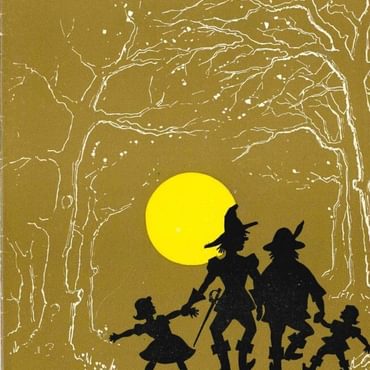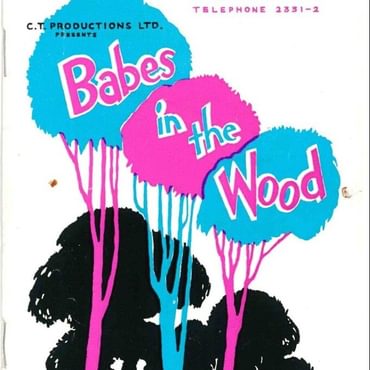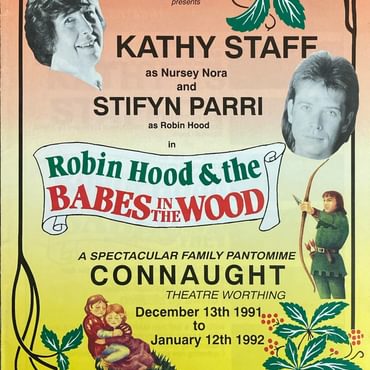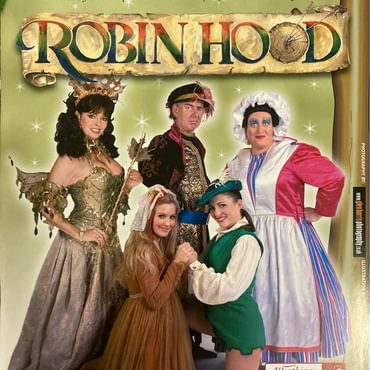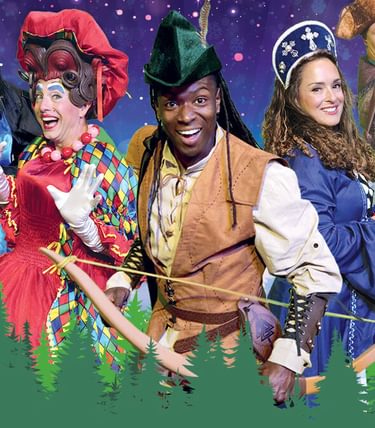
News Story
This festive season, WTM is gearing up for some merry mayhem with Robin Hood: the Pantomime. With daring stunts, captivating songs, and spectacular pantomime magic, it’s sure to get the whole family in the Christmas spirit.
We’re exploring the history of Robin Hood, both as a folktale and as a pantomime, to learn more about this enduring legend.
The legend of Robin Hood
Robin Hood is one of the oldest known figures from English folklore. The earliest remaining reference to the character is from a poem written in the 1370s. But it wasn’t until the late 15th century that narrative ballads about the hero emerged. Some of Robin Hood’s key character traits are present in the earliest references to him. This includes his status as an outlaw, his skills as an archer, and his animosity towards the Sheriff of Nottingham. He was also known to be devoted to the Virgin Mary and hold a particular regard for women. Little John and Will Scarlett were part of his band of outlaws from the start. But Friar Tuck and Maid Marian wouldn’t appear as recurring characters until later.
A Hero’s Character
Now, the best-known element of Robin Hood’s character is his rebellious nature. His unlawful redistribution of wealth, through stealing from the rich to give to the poor, has made him an enduringly popular folk hero. However, this element of his character does not appear in the earliest existing ballads about him. In many early stories, he is quick-tempered and often violent, but has strong moral convictions against the ruling classes. Here, his actions are often dictated by his religious faith. Sometimes he attempts to attend a mass, but struggles due to his outlaw status, or he is inspired by his love of the Virgin Mary to assist others. In some of the earliest surviving texts of Robin Hood, he encounters the Sheriff at an archery competition. This narrative element remains common today and is often where the Sheriff ambushes the outlaw.
Overall, Robin Hood has always been seen as a hero for the people. He generally acts with honour and decency, or is genuinely remorseful if he acts poorly. He is held as a moral contrast to the greedy, malicious actions of the ruling classes, the monarchy and the church.
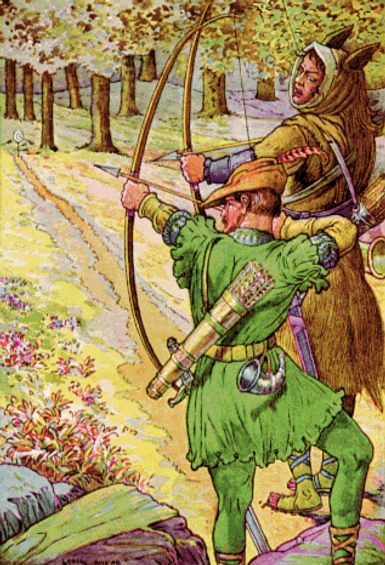
Robin Hood, By Louis Rhead. 1912
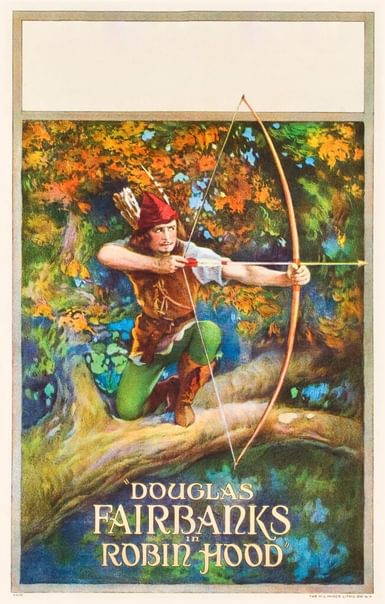
Promotional poster for Douglas Fairbanks in Robin Hood, 1922
The ‘Man in Tights’ in Popular Culture
The Origins of Panto
Last year, we discussed the evolution of pantomime with Paul Holman, founder of PHA. He discussed how people forget that pantomime has always grown with the times and adapted to stay relevant. Trends in theatre and audience tastes have encouraged changes over time, allowing the art form of pantomime to be defined in many ways.
Historically, pantomime is a style of comedic performance that has evolved out of several performance traditions in Britain. Initially, traditional European ‘mummers’ plays were combined with the 16th-century Italian comedy stylings of commedia dell’arte, which played a huge part in shaping pantomime as we know it.
The strong influence of commedia dell’arte was due, in part, to English theatrical censorship laws. After the English Civil War in the 1600s, Cromwell’s parliamentary rule outlawed theatre and performance entirely. When the monarchy was later restored, so were theatrical practices. However, only certain theatres were permitted to perform spoken drama at this time. From the restoration, up until the 1960s, plays and theatrical performances had to be licensed by the government. The art form existed under conditions of strict censorship for centuries, as it was deemed politically influential and morally questionable.
The Harlequinade & Pantomime
The physical comedy and mime of commedia dell’arte inspired a new theatrical genre in 17th-century Britain, called Harlequinade. Its emergence is mainly due to its origin as a mime act, making it a viable alternative to licensed performance. It also incorporated music and stylised dance. Harlequinade was based on commedia dell’arte principles, including slapstick comedy, magical transformations, and daring chase scenes. The commedia dell’arte character of Harlequin was central to the plot and became a hugely popular, romantic, figure. By the 18th century harlequinade plots started to merge with English folk stories such as Dick Wittington and Robin Hood. Harlequin would appear alongside the story’s hero and feature in the title to indicate the style of the piece.
Later, when restrictions on spoken drama were lifted, the landscape of British theatre began to change. Witty puns, topical and comedic songs, word-play, and audience participation became commonplace. These new elements edged out the desire for silent physical storytelling and saw the harlequinade transform into pantomime. Simultaneously, there was a rise in the popularity for stage adaptations of global folklore and fairytales. Stories from European, Middle Eastern and Asian traditions, such as Cinderella, tales from the Arabian Nights, and Mother Goose stories, introduced new characters and exotic settings.
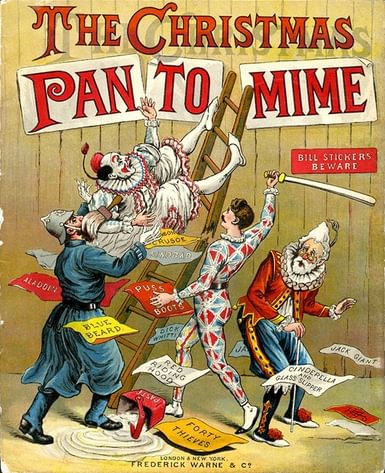
The Christmas Pantomime colour lithograph book cover, 1890, showing harlequinade characters
By the Victorian era, theatre was a spectacle in itself, with luxurious costumes, elaborate sets, and incredible stage effects. The popularity of Music Hall and the emergence of Variety performances contributed to the ever-evolving shape of pantomime.
Robin Hood: The Pantomime
Whilst Pantomime has grown and changed over time, Robin Hood has continued to be a popular narrative in the art form. The archetypal characters and humanitarian, moralistic themes in Robin Hood lend themselves well to the structure of a pantomime. It has been common in the past for the Robin Hood tale to be combined with that of the ‘Babes in the Wood’. This is a traditional English tale about two children who are abandoned in a wood and, unable to survive alone, ultimately die. However, in versions involving Robin Hood, he and his band of merry men rescue and care for the children.
Worthing has enjoyed a Robin Hood panto on many occasions since the Connaught started hosting live theatre in the 1930s. The first was a Christmas production of Babes in the Wood in 1932, and the most recent was back in 2007.
Image gallery
Robin Hood Today
Robin Hood continues to be a popular panto today. Last year’s CBeebies Panto was Robin Hood, and it is also the panto at the London Palladium this year. In Worthing, the timeless tale of Robin Hood springs to life with some spectacular panto pandemonium down at the Pavilion.
Join Robin and his band of outlaws on a crusade of merriment and revelry. WTM’s epic adventure will get the whole family involved in the magic of panto this Christmas. With thrilling stunts and jokes as sharp as an arrow, Robin Hood: The Pantomime will steal your hearts and make you feel merry all the way into the new year.
